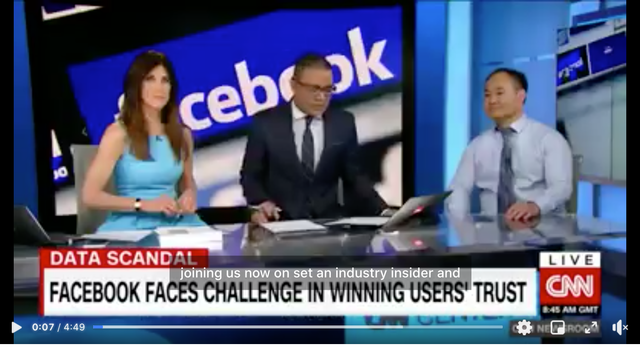How long does it take to get results with digital public relations?
It’s the million-dollar question every brand wants to know.
The short answer is: longer than digital advertising, and the results are worth it!
Like SEO, digital public relations is a long play.
It’s organic, editorial, third-party credibility, and social proof.
Unlike paid advertising, there is typically no immediate gratification after launching a public relations program.
It’s about building a relationship with multiple media outlets including Google, social media channels, influencers, bloggers, and traditional journalists.
Why Digital Public Relations Will Not Work
Unrealistic expectations, misappropriated budgets, lack of experience, and poor communication are just a few of the ways to really f*ck up the outcome of a digital public relations program.
“Spend an extra $100K this month on PPC or Facebook ads? No problem. Invest in the resources to reach top-tier influencers and media? No budget.” – said too many CMOs and CEOs.
Those same deep-pocketed companies will spend money on advertising, yet seem to skimp on all things public relations.
Yet the day you stop the ad campaigns, the traffic stops.
Public relations organically functions like SEO.
When done right and consistently over time, PR is the gift that keeps on giving in ways you could not buy in digital advertising.
Digital public relations is a marketing lifestyle, not a quick weight loss diet or bottom-of-funnel conversion ad.
The beauty of public relations is that it hits every part of the funnel, from top to middle to bottom, including customers.
The Bright Side of Digital PR
Living in a digital PR world of media links, keywords, mentions, shares, and meta, it’s sometimes easy to forget the public relations basics.
Public relations gives brands what they can’t buy in ads.
This includes and is not limited to:
- Thought leadership.
- Credibility.
- Third-party endorsements.
- Organic search results.
- Community.
- Relationships.
- Impact.
- Low budget/no budget is needed.
This can come in the form of media mentions, guest articles, speaking engagements, reviews, and even brand journalism.
While the number of media outlets shrank in 2020, leaving journalists spread thin and maxed out with pitches, the opportunity to be the media and influence to your audience has never been more opportunistic.
Public Relations Myths
I recently polled a group of the most successful public relations pros and digital marketing experts, and the results netted no shortage of insight and advice about the most significant public relations myths and musts.
All PR Is Created Equal
No, it is not.
As with any craft, there are categories, specialties and niches, and nuances. It’s important to know what you’re best at (and that might be as a generalist or specialist) and to be able to communicate it.
Sarah Evans, digital correspondent and publisher of the newsletter PR@ctical, said:
“I love being able to send referrals because people know their specialty (and I know mine!). It makes for happy clients and a happy professional network.”
The Best PR Pros Live in LA, New York, or [Fill in the Blank With a Sexy City Name]
Samantha in Sex and the City might have been all about the power cosmo and Rolodex (now called contacts).
But today’s reality is that expert public relations credentials can be found in any city, town, or neighborhood and can access a global reach.
Keep in mind, you are looking for talent and not location.
Especially with the pandemic, working remotely is in, and in-person happy hours are now virtual.
It’s all about the DM and media relationship building via building trust and professional social networking.
Fact: Almost 60% of PR professionals follow journalists on social, and 75% of journalists said they like that!
Measurement Is More Than a Number
PR reach isn’t measured only in numbers. According to Tanya Pinsoneault, PR consultant:
“At the end of the day, it’s about forging lasting connections. Not just with news media, but with consumers, employees, and the community.”
Credibility is earned.
Only Big Companies Do Social Listening
Robyn Linders, social analytics expert and founder of Grill Girl, said:
“All companies, big and small, B2C and B2B need to understand the environment they are competing in. Social analytics is the best way to understand this quickly and honestly from regular people’s mouths.”
Public Relations Musts
Respond to Press Inquiries Within Minutes.
If you wait until the next day, you will have missed the opportunity.
“When the Cambridge Analytica story broke, I got an email at dinner from someone I didn’t know, asking for my thoughts on the scandal,” said Dennis Yu, digital marketing expert, entrepreneur, and founder of Blitzmetrics. “I could have easily missed it as spam, but then realized it was CNN. After calling the journalist back immediately, not even waiting until I got home from dinner… by the next morning, I was in Atlanta on CNN live in front of 3.5 million people worldwide being interviewed on the topic.”

Journalists are on deadlines for breaking news and are often balancing multiple sources in crafting a story to publish.
So be their friend by acting quickly via email, phone, and social media.
Organic & Consistency Pays Dividends
Digital public relations is not (typically) effective when done in short bursts or “trials.”
PR is a long organic game and should always be in motion, similar to an effective SEO program.
A smart marketer or CMO will not invest in SEO just once a year or when you launch a new website.
A savvy brand marketer has an “always-on” SEO/PR program in place, funded and supported by the boardroom.
Media outreach is similar to the concept of adding fresh content to your website regularly. Google will reward optimized and newsworthy content.
You want to be pitching news angles to the appropriate media, and the media will eventually reward you with earned media—something you can’t buy with a Facebook ad every month.
Brand Coverage, Mentions, & Inferred Links Matter
Yes, links still matter.
Do they count as much to Google as they did five years ago? Probably not.
Will they matter as much in five years as they do today? Probably not.
Having more links isn’t necessarily better, either. John Mueller is clear on what Google is looking for in a link profile:
“We try to understand what is relevant for a website, how much should we weigh these individual links, and the total number of links doesn’t matter at all. Because you could go off and create millions of links across millions of websites if you wanted to, and we could just ignore them all.”
Page Experience Is a Must for Google
Beware: Your brand’s page one Google search results could be at risk.
Your organic page one search results are earned and subject to the new Core Web Vital and Page Experiences guidelines.
Consider a first-page Google ranking as SEO PR. As Bruce Clay, SEO expert and owner of Bruce Clay, Inc., says:
“You could lose your page one Google SERP status if your page experience is not up to par. This could result in a loss of up to 35% of earned search traffic even if you drop only a few positions.”
If you are a search marker, you know Google makes more than 3,000 changes to Google Search each year.
That’s roughly ten changes per day. And most of those changes were ranking algorithm updates.
Very few algorithm updates and even those that Google believes are essential to quality are announced ahead of time.
But these latest updates were announced almost a year ago (that’s an excellent public relations practice).
The new Page Experience algorithm update is set to hit in May 2021 and focuses on user experience factors.
Pitch Perfect
Perfection is not a reality, even with pitching the media.
That does not mean sloppy pitching is acceptable, or you could wind up included in Muck Ruck’s monthly round-up of bad pitches.
The last thing you want to see is you or your public relations pro included in a cringe-worthy Tweet from a journalist as a bad pitch example.
who wants a personalized pr pitch anyway?
"Hi [MediaContactFirstName]"
followed by:
"I think it would be a great fit for [MediaOutletName]."— Nancy Han (@nancyhan) August 7, 2020
Some “Must” Tips on Pitching the Media
- Research the journalists and make sure to get the outlet and targeting right.
- Read past articles and follow current ones.
- Personalize the pitch as much as possible
- Be helpful in ways that are outside the box. If you see an article/report/study a journalist you are targeting might be interested in, send it with no strings attached.
- Follow them on social and engage.
- Journalists prefer simple email pitches. Do not send an essay. Keep pitches simple, concise, and to the point. Do not do this: “Hi, my name is Lisa Buyer and I hope you are doing well.” They know your name from the email “From,” and while it’s nice that you hope they are doing well, the journalist’s eyes glaze over that. It’s fluff.
- Subject lines matter. Get them to open your email. Also, keep in mind that journalists will save emails and search via keywords later if they want to circle back. They might not remember your name, but if you optimize the subject line with a keyword related to the pitch, this helps.
Truth
Any good PR agency is going to put the truth out there.
A public relations strategy is more than having a publicist on speed dial, or having favorites to clean up a major mess, or performing magic as a “Spin Doctor.”
PR pros with a moral compass will guide the client into a strong brand position over time.
Brands should expect the PR team to put the truth out there, prepare for a crisis, and prevent mishaps that could lead to PR nightmares.
Intelligence Tools
Discovering the most critical and relevant audience insights starts with research and having intelligence at your fingertips, from tools for media outreach, competitive intelligence, persona research, and trending opportunities.
SparkToro – Want to know what podcasts are your audiences listening to, what YouTube channel they watch, or which press accounts they are engaging? SparkToro is a new-ish, keen and innovative way to find out audience insights, opportunities and build a media outreach list for free.
NetBase Pro – NetBase Pro offers agencies and brands real-time social analytics with an intuitive search-based interface.
The difference between earned media and paid is that paid ads stop when campaigns are no longer funded.
Earned media such as public relations and SEO deliver credibility and returns you can’t match when you buy Google and Facebook ads.
Digital public relations can set you free.
More Resources:
- How Brands Should Use Instagram PR During Work-From-Home Mode
- Digital PR: How to Define What ‘Good’ Looks Like & Drive Measurable Gains
- The PR Process That Drives Hundreds of Links Time After Time
Image Credit
Screenshot submitted by author, February 2021.





